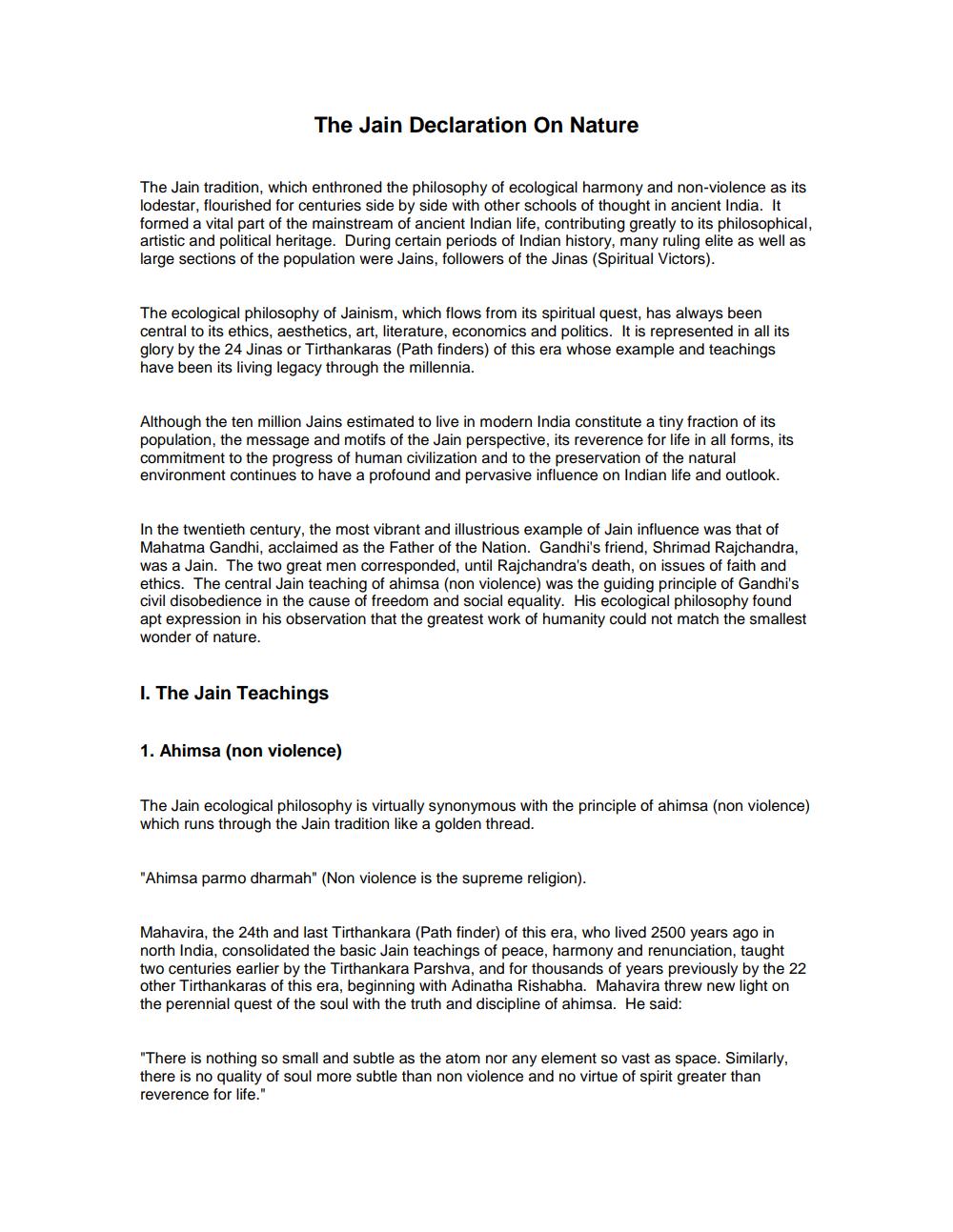________________
The Jain Declaration On Nature
The Jain tradition, which enthroned the philosophy of ecological harmony and non-violence as its lodestar, flourished for centuries side by side with other schools of thought in ancient India. It formed a vital part of the mainstream of ancient Indian life, contributing greatly to its philosophical, artistic and political heritage. During certain periods of Indian history, many ruling elite as well as large sections of the population were Jains, followers of the Jinas (Spiritual Victors).
The ecological philosophy of Jainism, which flows from its spiritual quest, has always been central to its ethics, aesthetics, art, literature, economics and politics. It is represented in all its glory by the 24 Jinas or Tirthankaras (Path finders) of this era whose example and teachings have been its living legacy through the millennia.
Although the ten million Jains estimated to live in modern India constitute a tiny fraction of its population, the message and motifs of the Jain perspective, its reverence for life in all forms, its commitment to the progress of human civilization and to the preservation of the natural environment continues to have a profound and pervasive influence on Indian life and outlook.
In the twentieth century, the most vibrant and illustrious example of Jain influence was that of Mahatma Gandhi, acclaimed as the Father of the Nation. Gandhi's friend, Shrimad Rajchandra, was a Jain. The two great men corresponded, until Rajchandra's death, on issues of faith and ethics. The central Jain teaching of ahimsa (non violence) was the guiding principle of Gandhi's civil disobedience in the cause of freedom and social equality. His ecological philosophy found apt expression in his observation that the greatest work of humanity could not match the smallest wonder of nature.
I. The Jain Teachings
1. Ahimsa (non violence)
The Jain ecological philosophy is virtually synonymous with the principle of ahimsa (non violence) which runs through the Jain tradition like a golden thread.
"Ahimsa parmo dharmah" (Non violence is the supreme religion).
Mahavira, the 24th and last Tirthankara (Path finder) of this era, who lived 2500 years ago in north India, consolidated the basic Jain teachings of peace, harmony and renunciation, taught two centuries earlier by the Tirthankara Parshva, and for thousands of years previously by the 22 other Tirthankaras of this era, beginning with Adinatha Rishabha. Mahavira threw new light on the perennial quest of the soul with the truth and discipline of ahimsa. He said:
"There is nothing so small and subtle as the atom nor any element so vast as space. Similarly, there is no quality of soul more subtle than non violence and no virtue of spirit greater than reverence for life."




